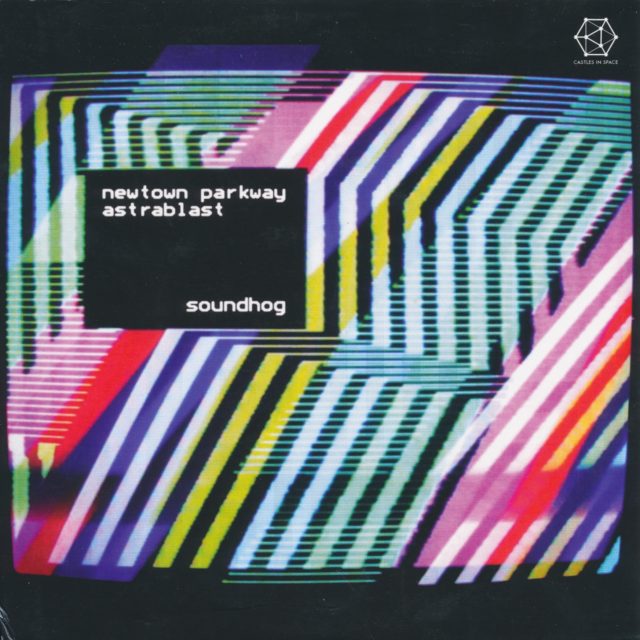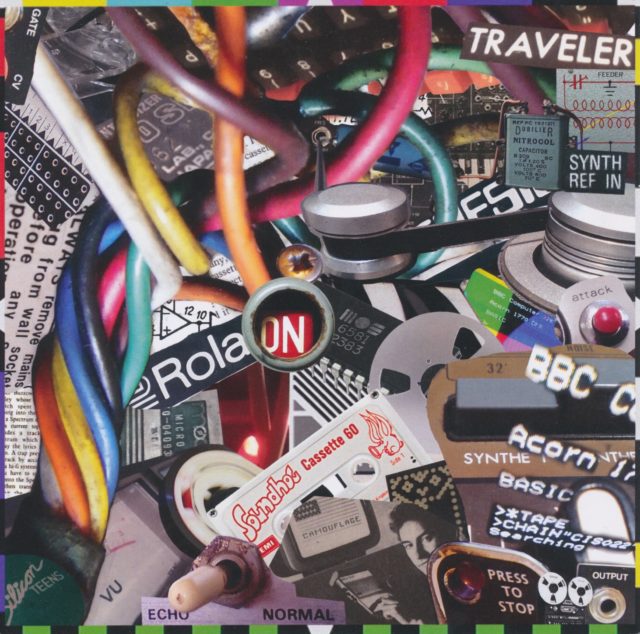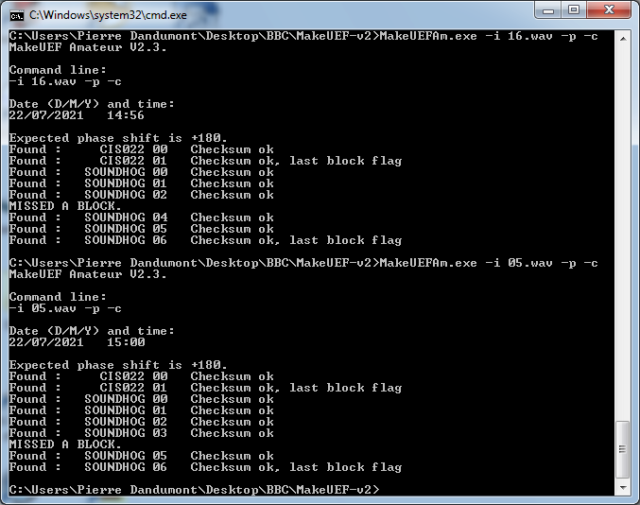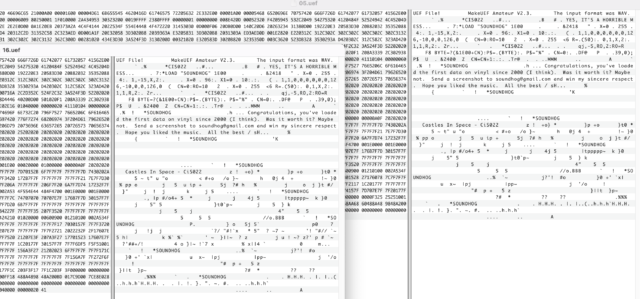This week, a rather recent vinyl program: it dates back to 2018. It’s found on the disc Newtown Parkway / Astrablast by Soundhog and is designed for the BBC Micro B.
Instead of repeating all the previous articles each time, I’ll refer you to the dedicated page, which explains what I do with vinyl records and lists all the pages containing programs, explanations, etc.
It should be noted that the cover does not explicitly indicate that there is data, but one of the inserts included with the disc, a 7-inch, shows the code needed to launch the software. And it’s obviously indicated on Discogs.
Recovery was not easy. On the first try, I read the disc at 33 RPM instead of 45 RPM. On the second try, it was impossible to retrieve the data, even by amplifying. On the third try, I used the microphone input of the sound card instead of the line input, and I got (almost) everything. A little explanation: my turntable has a USB output but the level is quite low. So I use a Creative USB sound card that has a line input and a microphone input. But usually, the volume of the line input is a bit low, and the microphone… too amplified, with no adjustable settings. Here, it was the microphone that worked. The main problem, besides the volume, came from the track: the data is on a second spiral, separated from the first one, and it was clearly at the limits of the turntable. As soon as I placed the arm on it, it tried to return to the beginning. But by trying several times, I managed to go to the right place and record.
For the data, I cheated a little: after a few attempts, I had an audio file with several blocks of the program (but not all) and another one with several blocks of the program… but not all. And with both recordings, I had all the data. So I opened the UEF files with a hexadecimal editor to copy the blocks from one file to another. The structure of a UEF is well standardized and the blocks are clearly visible. This little hack worked perfectly: I was able to load the software into an emulator.
It’s just a still image with a bit of audio and scrolling text, all for the BBC Micro B.







